Reaching Macronutrient Goals | QA
Debbie James, RDN, helps answer a reader’s question on how to properly approach macronutrient target goals.
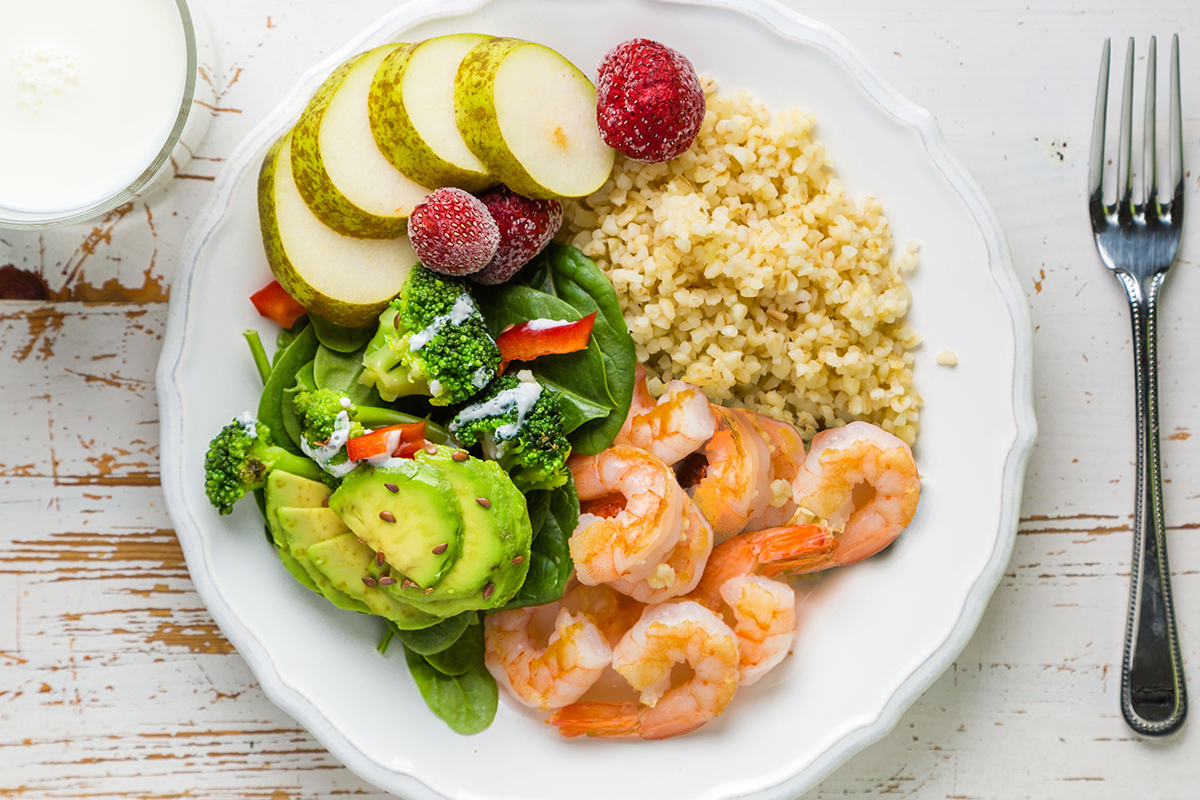

I really want to lose stomach fat and thigh fat, but I also really love food which is a problem. What tasty foods can I have but still lose the fat? I don’t do very well with an only fruits and veggies diet; can I have pasta? Maybe rice? Bread? Cheese? Thanks!
– Abigail C.

Once upon a time there was a potato chip whose ‘fat’ couldn’t be digested. Hurray for the crisp lovers! Unfortunately, people experienced digestive issues and such products went by the wayside. Common sense prevailed that fried snacks need to be limited not re-engineered. I share the story because you seem to want “tasty” foods that aren’t fattening. That depends on what your taste buds are, of course!
I agree a traditional salad won’t do. To me, colorful plates of mixed textures and strong/mild flavors hit the spot. Enjoying your food healthily means incorporating favorite items in a portion-controlled way. Pasta or rice should comprise only a quarter of your plate.
For bread and cheese, focus on whole grain breads (two ounces per meal) and stronger flavor cheeses (an ounce maximum). So foot long subs, mac n’ cheese and lasagna are out. Pear with blue cheese crumbles, an English muffin pizza and chicken + mushroom wild rice soup are in.
You can achieve successful weight loss on an infinite number of diets that include or exclude one particular type of food. Don’t like broccoli? Then opt for zucchini or other green vegetables. Beef lover? Stick to 3-4 ounce servings of sirloin and tenderloin. Grossed out by the texture of cottage cheese? Substitute Greek yogurt or diced tofu. The keys are: 1) wholesome naturally low-calorie foods (like plants) should make up the majority of your diet; 2) no matter which foods you choose to eat, most should be raw, freshly grilled, steamed or baked and little of it fried (in real oil, please).
– Debbie J., MS, RD
This article should not replace any exercise program or restrictions, any dietary supplements or restrictions, or any other medical recommendations from your primary care physician. Before starting any exercise program or diet, make sure it is approved by your doctor.
Some questions have been edited for length and/or clarity.
 Have a nutrition question? Our registered dietitian is ready to help!
Have a nutrition question? Our registered dietitian is ready to help!
Email nutrition@lafitness.com or submit your question below and it may be featured in an upcoming article!
Debbie James, RDN, helps answer a reader’s question on how to properly approach macronutrient target goals.
Many people need to count carbohydrates, often for blood sugar management. We offer three sample meals for those looking to keep their carb counts low.
Carbohydrates can sometimes get a bad rap. We take a deeper look into what carbs exactly are, how they effect the body & what types you should be consuming.
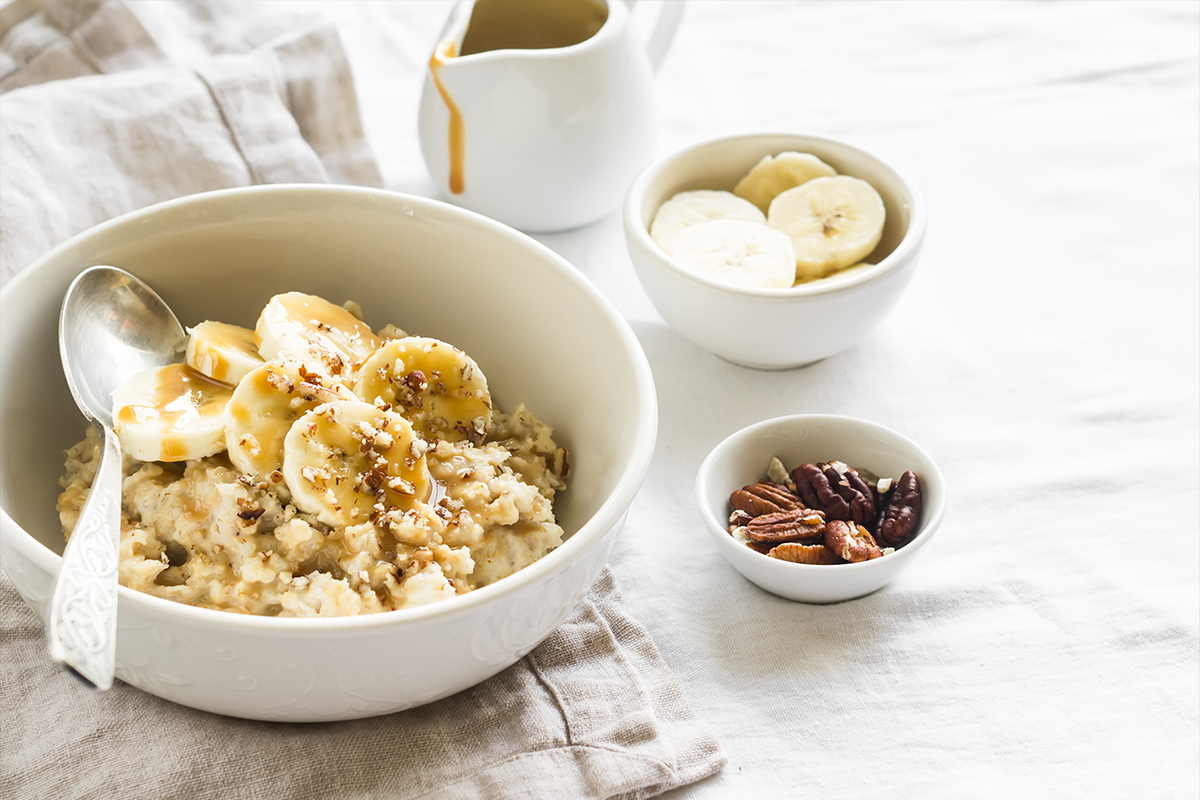

Greetings Nutrition: I am trying to get back in shape. I have a trainer at LA Fitness, and I think that I need to eat better. Could you give me some ideas of how I should be eating? Or a good meal plan that I can follow? I have been given a 1,416 calorie per day limit. Macros are: Carbs 203 grams, Fat 84 grams Protein 65 grams. I am having a hard time finding good breakfast options and making my protein of 65 grams daily. I don’t eat eggs so that cause problems for breakfast. I pretty much eat everything else. Any help that you can provide would be greatly appreciated.
– Eric H.

First and foremost, your provided macronutrient targets provide 1,828 total calories (812 calories carbohydrate, 756 calories fat, 260 calories protein), a considerable difference from your caloric limit. If the goal is qualitative, then the approach should be more precise. Not knowing which is more important for you, I’d go with the higher caloric target as you are working out and 1,400 calories may only be appropriate for significant weight loss, older or smaller-framed men.
We don’t provide meal plans, though several sample meals can be found throughout our Living Healthy blog. Since breakfast is the most challenging meal for you, here are some breakfast suggestions that provide roughly 550 calories.* I’ve broken that down as approximately 60 gram carb, 25 gram fat and 20 gram protein.
By working on your own lunch and dinner options, you can get close to the remainder macronutrients for the day. Quality can’t be overlooked, though! Foods with high micronutrient, fiber and unsaturated fat content will make a big difference even if you’re slightly off your gram or calorie goals.
* Calculated by Registered Dietitian Nutritionist using Fitday.com’s food log function. Findings were used along with RDN’s professional judgment.
– Debbie J., MS, RD
This article should not replace any exercise program or restrictions, any dietary supplements or restrictions, or any other medical recommendations from your primary care physician. Before starting any exercise program or diet, make sure it is approved by your doctor.
Some questions have been edited for length and/or clarity.
 Have a nutrition question? Our registered dietitian is ready to help!
Have a nutrition question? Our registered dietitian is ready to help!
Email nutrition@lafitness.com or submit your question below and it may be featured in an upcoming article!
Debbie James, RDN, helps answer a reader’s question on how to properly approach macronutrient target goals.
Many people need to count carbohydrates, often for blood sugar management. We offer three sample meals for those looking to keep their carb counts low.
Carbohydrates can sometimes get a bad rap. We take a deeper look into what carbs exactly are, how they effect the body & what types you should be consuming.
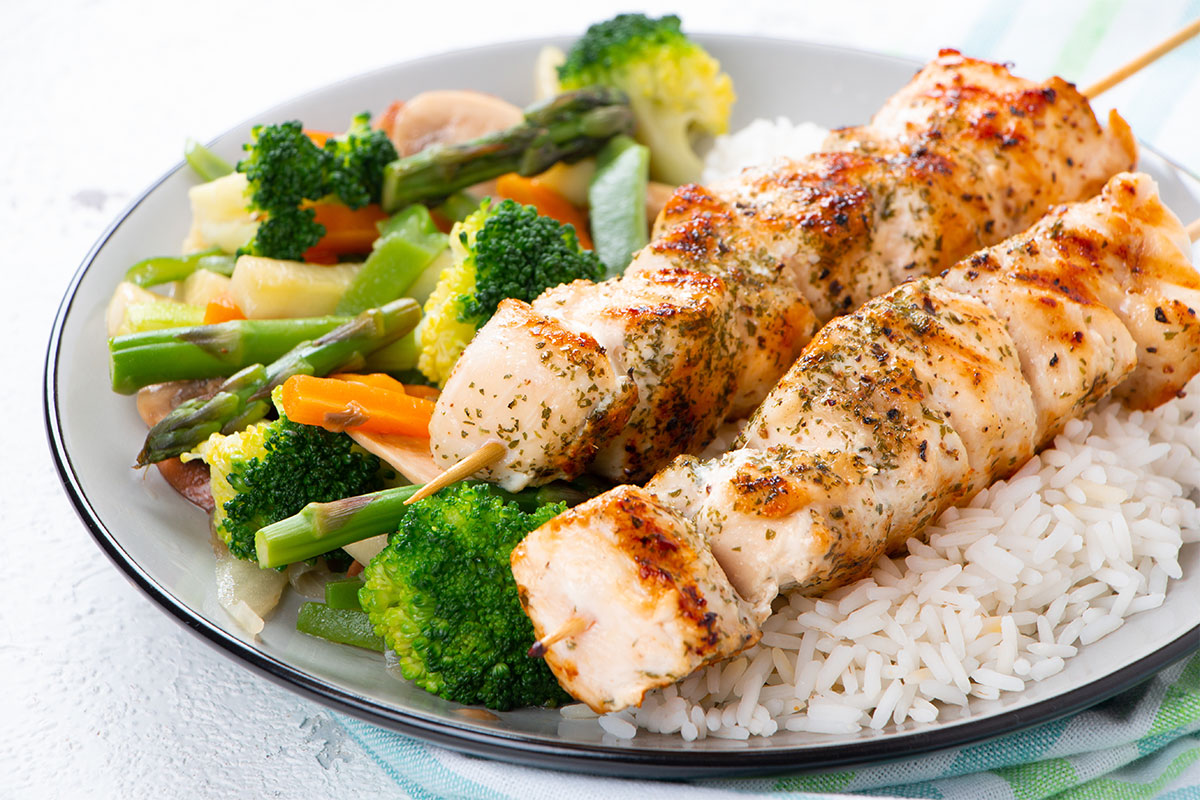

I need help with my carbs, please. I only allow 45 gm of carbs at each meal.
– Laura B.

You are in company with other people who may need to count carbohydrates, often for blood sugar management. The focus would be on low glycemic choices. For a limit of 45 grams carbohydrate per meal you could roughly plan on 25 gm from grain/starch, 10 gm from fruit or milk, and 10 gm from non-starchy vegetables. Remember that use of certain condiments will necessitate corresponding reduction from your food total.
Here’s one example providing approx. 45 gm carbohydrate meals:
Analysis on www.FitDay.com by a Registered Dietitian Nutritionist = 135 gm total carbohydrate (42 breakfast, 47 lunch, 42 dinner) in 1850 calories. Findings were used along with RDN’s professional judgment.
– Debbie J., MS, RD
This article should not replace any exercise program or restrictions, any dietary supplements or restrictions, or any other medical recommendations from your primary care physician. Before starting any exercise program or diet, make sure it is approved by your doctor.
Some questions have been edited for length and/or clarity.
 Have a nutrition question? Our registered dietitian is ready to help!
Have a nutrition question? Our registered dietitian is ready to help!
Email nutrition@lafitness.com or submit your question below and it may be featured in an upcoming article!
Debbie James, RDN, helps answer a reader’s question on how to properly approach macronutrient target goals.
Many people need to count carbohydrates, often for blood sugar management. We offer three sample meals for those looking to keep their carb counts low.
Carbohydrates can sometimes get a bad rap. We take a deeper look into what carbs exactly are, how they effect the body & what types you should be consuming.

Shakespeare may have once famously written, ”For never was a story of more woe than this of Juliet and her Romeo.” Clearly,he never knew of the tragic love story between carbs and the waistline.
Carbohydrates. What are they? Why are they so delicious? And why do they get a bad rap?
Let’s break it down. A carbohydrate is defined as “any large group of organic compounds occurring in foods and living tissues and including sugars, starch, and cellulose.”1 An easier way to explain this is that “carbohydrates are the sugars, starches and fibers found in fruits, grains, vegetables and milk products.”2
These compounds can be grouped into two different categories: simple and complex.

Simple Carbohydrates (a.k.a. The “Bad” Carbohydrates)
Simple carbohydrates, also known as refined carbs, can be found naturally in milk products, fruits and vegetables. However, they are also found in foods containing processed and refined sugars such as soft drinks, baked goods, and cereal. The latter is what gives carbs a bad reputation, as those type of foods can be unhealthy for your body and lead to disease if too many are consumed. This is because refined and processed sugars are considered “empty calories”, meaning they do not have vitamins, minerals or fiber, which can lead to weight gain.3
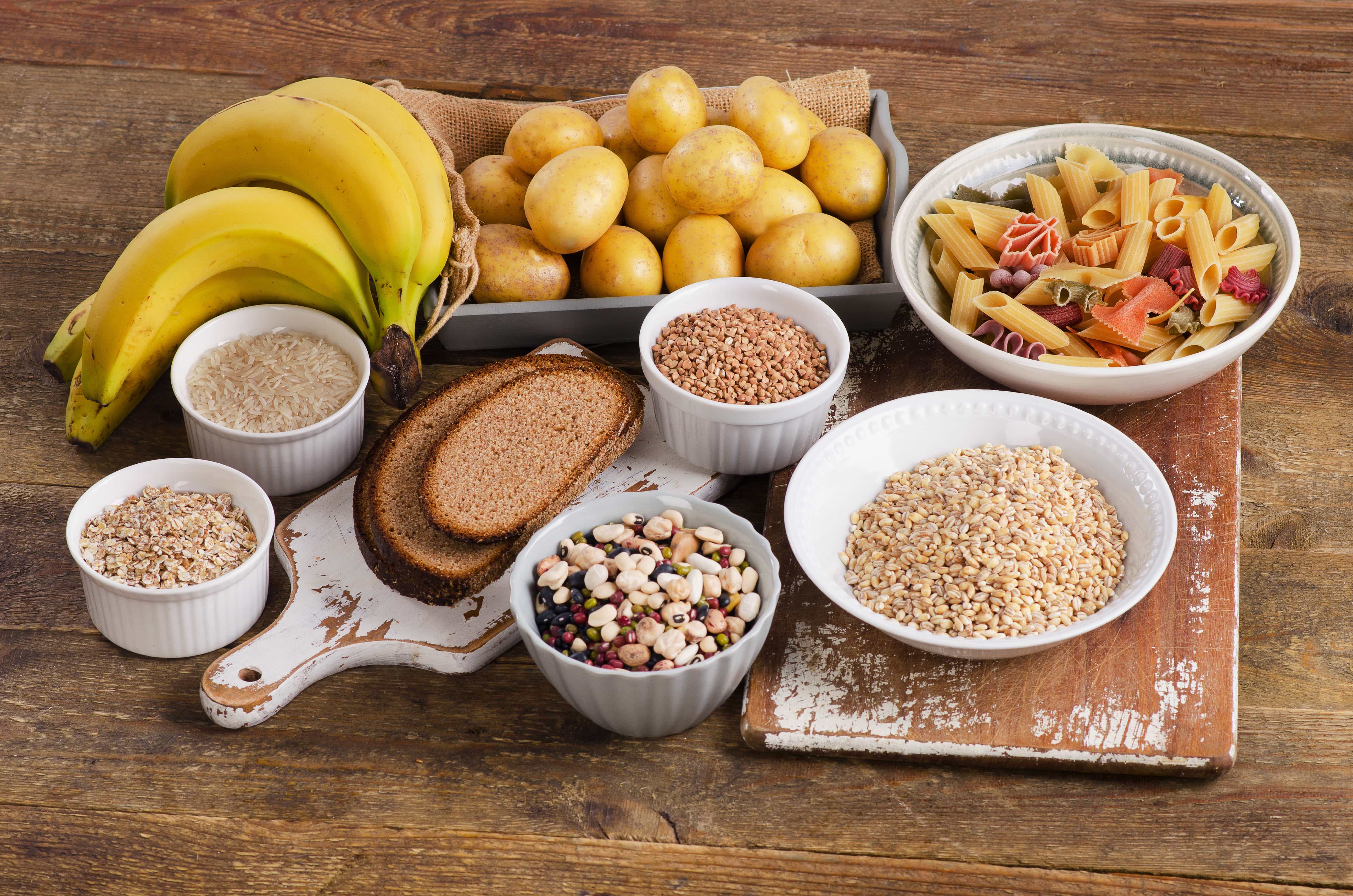
Complex Carbohydrates (a.k.a. The “Good” Carbohydrates)
Complex carbohydrates, also known as polysaccharides, are known to digest slower than simple carbs and are packed full of nutrients for your body. That makes these foods more filling, which helps aid in weight control.4 It also helps in providing the body more energy over longer periods of time.5 A few examples of complex carbohydrates are broccoli, grains, and beans.

If you’re still unsure what makes certain carbs “good” versus “bad”, some helpful distinctions are as follows:6
Bad carbs are:
Good carbs are:
While not all carbs are created equal, our bodies do need them to function. In fact, the right type of carbs can help benefit our bodies in multiple ways.
1. Heart Health
Carbohydrates high in fiber help lower LDL-cholesterol (low-density lipoprotein) levels7, which can contribute to a plaque-like deposit that clogs arteries and makes them less flexible.
2. Weight Loss
Again, the right type of carbohydrates can help with weight loss due to fiber. Dietary fiber helps the body feel full8. Therefore, you’re less likely to over eat.
3. Mental Health
This is tricky because there have been studies showing both positive and negative effects of carbohydrates on the brain. It’s not exactly about carbs in general, but the type of carbs you’re consuming – do you see a trend here? Stick with complex carbohydrates over simple.
The important thing to keep in mind is that there are three different types of carbohydrates: starch, sugar and fiber. Furthermore, carbohydrates can be broken down into two categories known as simple and complex. Depending on your own unique body composition and health history, it may be best to consult your doctor before deciding what changes to make in your diet.
Interested in finding out more about carbohydrates and their effect on the body? Check out some other Living Healthy articles on the topic below!
When Cutting Carbs Becomes Extreme | Q+A
‘Healthy’ Carbohydrates for Weight Loss – fact or fiction?
No Carb Diet? Think Twice, You Need Carbohydrates to Survive!
Sources:
Our Registered Dietitian, Debbie James, answers a reader’s question about tasty foods that don’t obstruct your weight-loss goals.
Debbie James, RDN, helps answer a reader’s question on how to properly approach macronutrient target goals.
Many people need to count carbohydrates, often for blood sugar management. We offer three sample meals for those looking to keep their carb counts low.
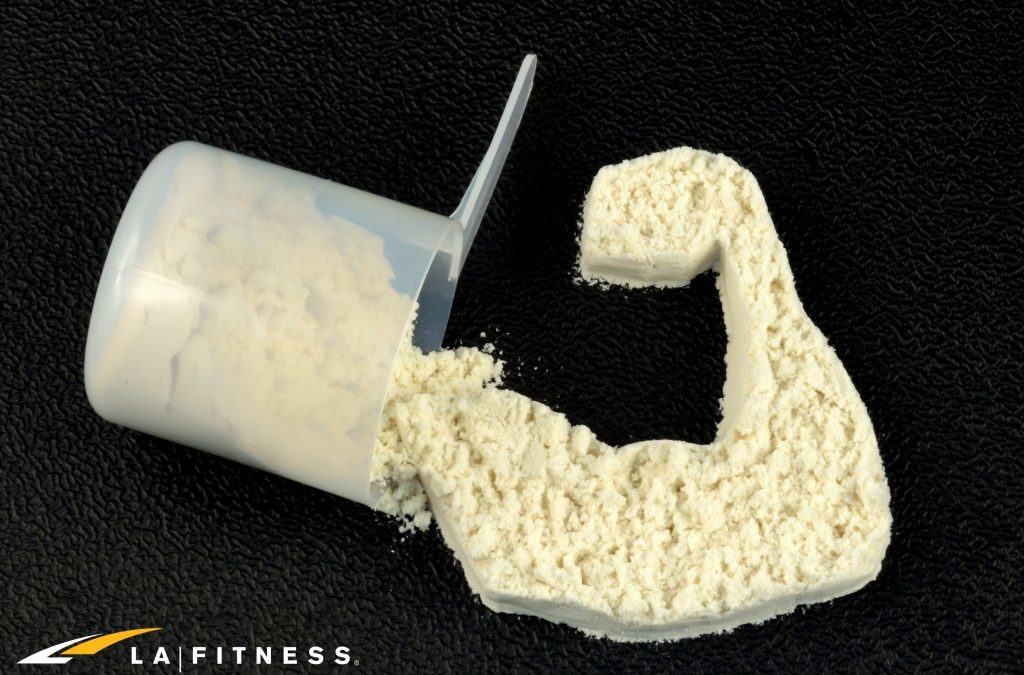
Be the first to know about exclusive
content, deals and promotions